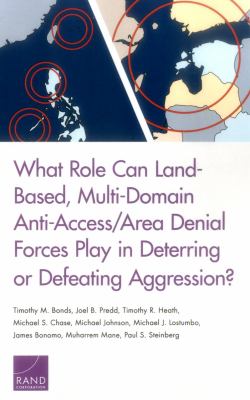
|
What role can land-based, multi-domain anti-access/area denial forces play in deterring or defeating aggression?
Copies
0 Total copies, 0 Copies are in,
0 Copies are out.
Title
What role can land-based, multi-domain anti-access/area denial forces play in deterring or defeating aggression?
Digital Link
Authors
Subjects
United States. Army--Operational readiness.
Access denial (Military science)--China.
Access denial (Military science)--Prevention.
Access denial (Military science)--Russia (Federation).
Access denial (Military science)--Iran.
Air defenses--United States--Planning.
Air defenses--Europe.
Air defenses--Pacific Area.
Operational readiness.
Access denial (Military science)
Air defenses.
Access denial (Military science)--China.
Access denial (Military science)--Prevention.
Access denial (Military science)--Russia (Federation).
Access denial (Military science)--Iran.
Air defenses--United States--Planning.
Air defenses--Europe.
Air defenses--Pacific Area.
Operational readiness.
Access denial (Military science)
Air defenses.
Language
English
Published
Santa Monica, CA : RAND Corporation, [2017].
Publication Desc
xxiii, 174 pages : illustration (some color), color maps ;
ISBN
9780833097460
(pbk.)
LCCN
2017446578
Series
Dimensions
23 cm.









